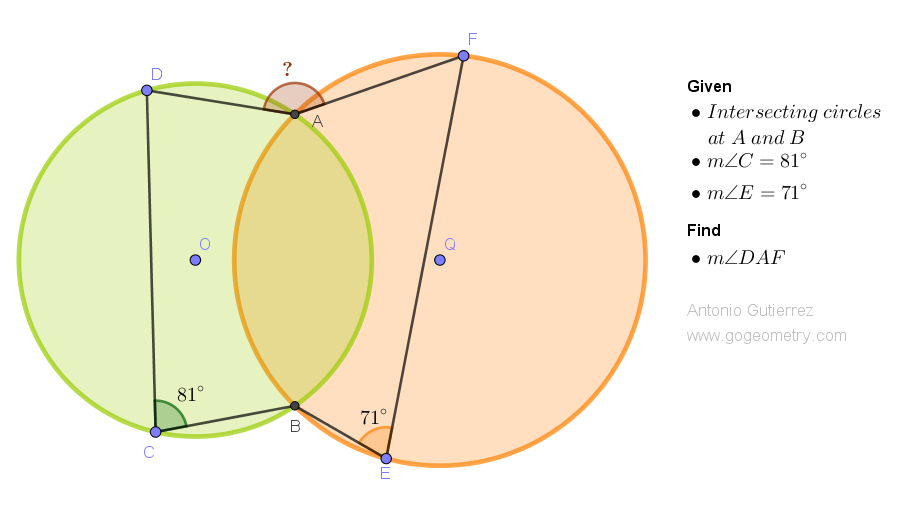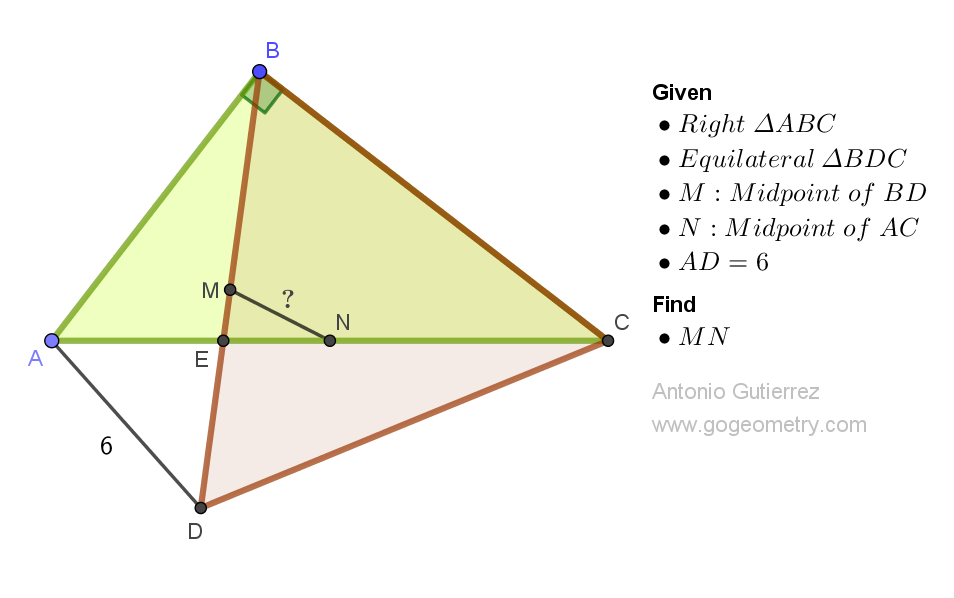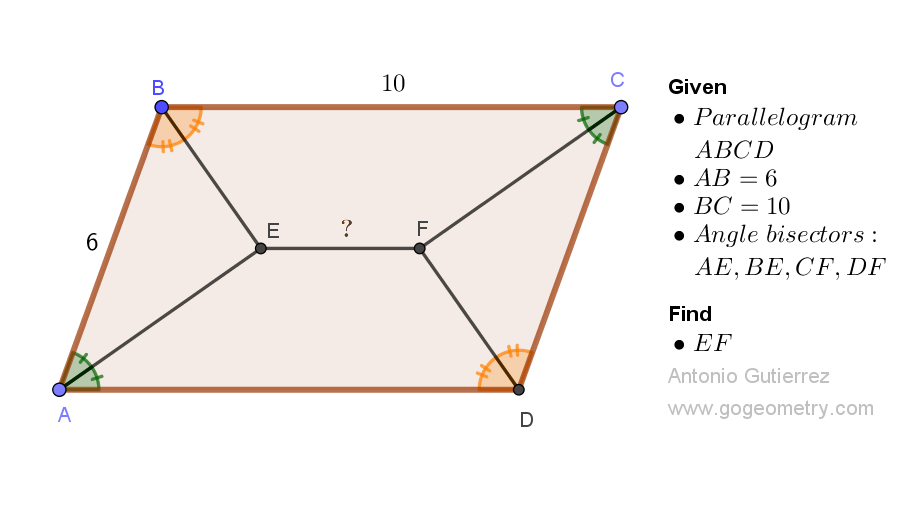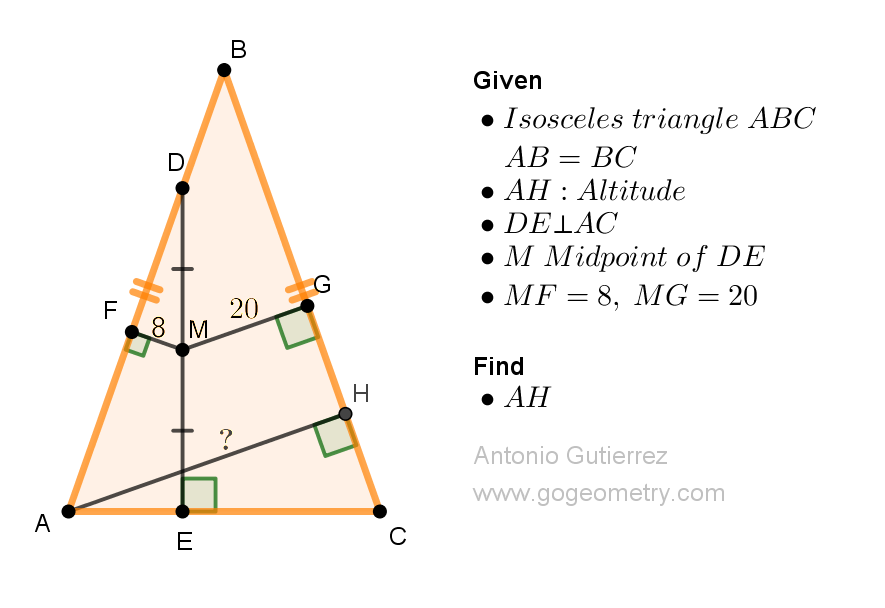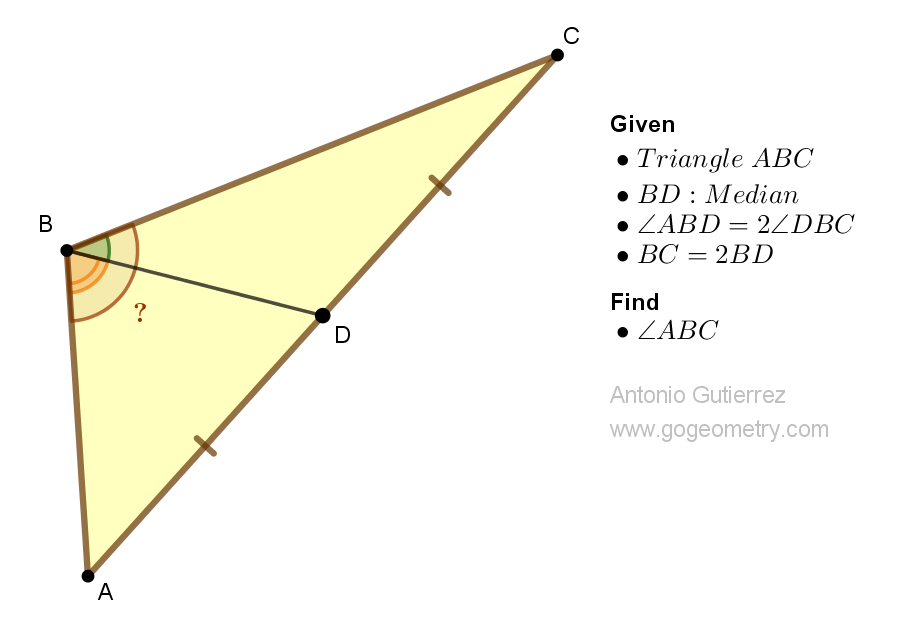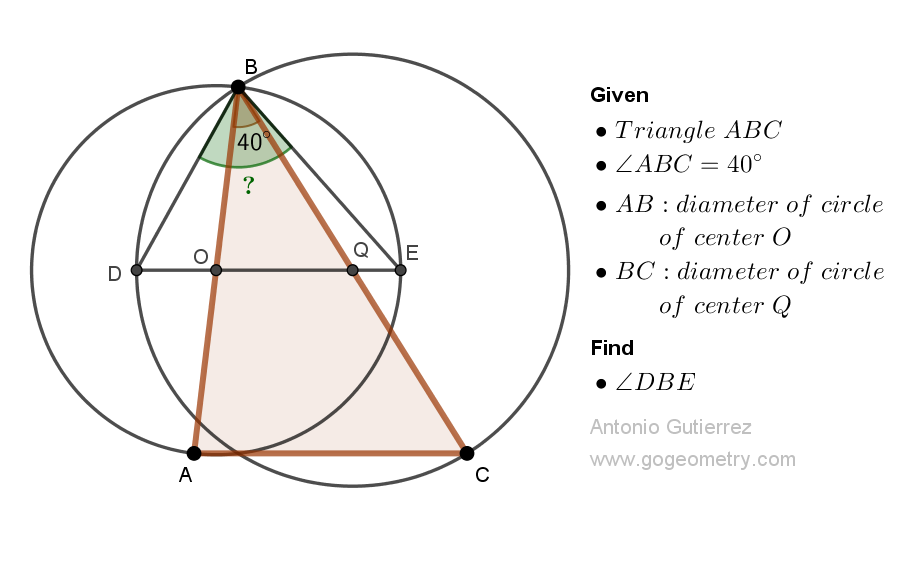Geometry Problem 1526: Mastering Geometry Problem-Solving: Discover the Distance Between Two Sides in a Parallelogram Using Bisectors and Distance Measures. Difficulty Level: High School.
Given parallelogram ABCD with bisectors of angles A and D intersecting at point E, and the distance from E to AD measuring 10 units, determine the distance from A to CD in units.
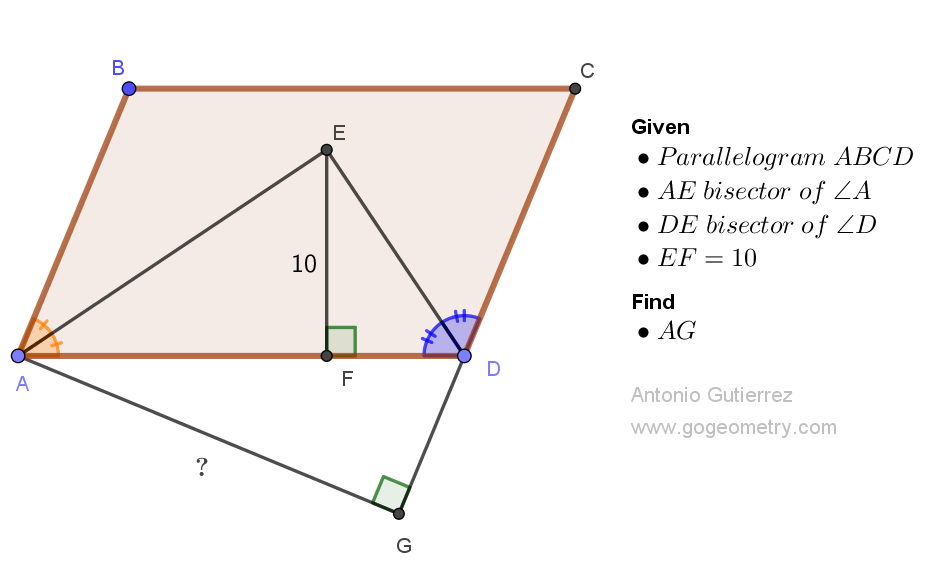
View or post a solution
Geometry Tips Now!
| Concept | Definition | Theorem / Comment |
|---|---|---|
| Triangle | A polygon with three sides and three angles. | The sum of the angles in a triangle is 180 degrees. |
| Parallelogram | A parallelogram is a quadrilateral with both pairs of opposite sides parallel. | Opposite sides of a parallelogram are congruent; opposite angles are congruent; consecutive angles are supplementary; diagonals bisect each other. |
| Angle bisector | A line or ray that divides an angle into two congruent angles.. | The Angle Bisector Equidistant Theorem states that if a point lies on the angle bisector of an angle, then it is equidistant from the two sides of the angle. |
| Parallel lines | Two lines in a plane that do not intersect. | If two parallel lines are cut by a transversal, then the alternate interior angles are congruent, the corresponding angles are congruent, and the consecutive interior angles are supplementary. |
| Distance | The distance between two geometric figures is generally defined as the minimum distance between any two points, one on each of the two figures.. | |
| Perpendicular lines | Two lines or line segments that intersect at a right angle. | Two lines perpendicular to a same line are parallel to each other. |
| Rectangle | A rectangle is a two-dimensional shape with four straight sides and four right angles (90-degree angles). | In a rectangle, opposite sides are congruent and parallel. |
| Congruence | Two triangles are said to be congruent if all corresponding sides and angles of one triangle are equal to the corresponding sides and angles of the other triangle.. | There are several ways to prove that two triangles are congruent, including the Side-Side-Side (SSS), Side-Angle-Side (SAS), Angle-Side-Angle (ASA), and Hypotenuse-Leg (HL) criteria. |
| Auxiliary line | Auxiliary line is a line that is added to a diagram in order to help prove a theorem or solve a problem. | Often, an auxiliary line is drawn to create additional congruent or similar triangles, to create parallel lines, or to create right angles. The use of auxiliary lines can simplify a problem or make a proof more straightforward. However, it is important to ensure that the auxiliary line does not create any new intersections or angles that were not present in the original diagram. |
Discover Even More: See Also...
Problem 1527
Problem 1525
Problem 1524
Problem 1523
Problem 1522
Problem 1521
Thematic Poem:
Solve the Parallelogram Challenge with Bisectors and
Distances
Amidst the lines and angles that we see,
A
challenge awaits, a geometry mystery,
Mastering
problem-solving, the key,
To unlock the secrets of
symmetry.
A parallelogram, ABCD its name,
Bisectors and
distances, the tools to claim,
Find the distance from
A to CD,
With precision and skill, solve it with
glee.
A journey of discovery, a quest to prevail,
With
logic and reasoning, let us unveil,
The distance
between two sides we seek,
A problem to solve, a
victory to keep.
So take on the challenge, with courage and might,
As we journey together, towards problem-solving light,
Master geometry, unleash your potential,
With
bisectors and distances, make the problem incidental.
If you're interested in finding more poems with a focus on geometry, you may enjoy this collection: More geometry thematic poems.
Recent Additions
Geometry Problems
Open Problems
Visual Index
All Problems
Triangle
Parallelogram
Angle Bisector
Perpendicular lines
Parallel lines
Congruence
View or Post a solution
Search our site with Google:
